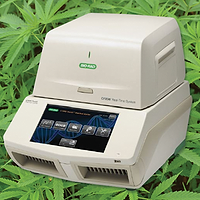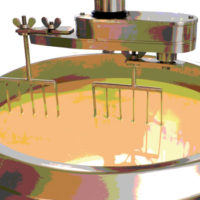Demystifying the Microbial Testing Process

In this day and age of technical innovations, food processors are constantly inundated with new and novel testing methods, particularly rapid methods that promise to produce test results faster, easier and more accurately than ever before. Many of these test methods and kit manufacturers promise cost savings as well. All too often it seems that every time you turn around there is yet another new test method or kit available. As a company tries to sort through the maze of rapid methods, they may also struggle to figure out which method best meets the needs of their company, the needs of their customers, regulatory requirements and still be cost effective and save time. So, what are some of the factors you need to consider when you evaluate a new method?
Before you take a product sample or swab the environment, equipment or carcasses, you need to ask yourself this question: what is your objective in taking this sample and in performing the test? Are you evaluating incoming raw materials from suppliers; meeting in-house or customer specifications; meeting regulatory requirements, standards or performance criteria; developing in-house specifications; or all of the above? What will you do with the data and how will you address the results? The answers to these questions will help you decide the relative importance of some of the following variables that can influence your decisions, such as is a quantitative or qualitative test needed and how fast are results required.
Has the new microbiological method or system been validated? In assessing a new test kit or system, consider what type(s) of validation has been done for the test. Has the test been validated for your types of food products? Has the test been validated in environmental samples? Do any of the ingredients used in your products, such as salt, spices, nitrites and antimicrobials, interfere with the test and affect the results? Will the cleaners and sanitizers used on equipment and in the environment interfere with the media, test or results ? Has the test undergone third-party validation and have the results of the validation testing been published? Has the test kit or method been compared with current comparable methods? Ask to see any data that are available that may demonstrate the chance of success you will have with the method. Also, find out how much additional validation you will need to do in house.
Which Test?
What kind of test are you looking for? You will need to decide whether you need a quantitative test so that you know how many organisms are present in the sample or a qualitative test to show the presence or absence of a specific microorganism. Obtaining counts of microorganisms is more useful when assessing the microbiological quality of raw materials or when you are evaluating shelf-life. Presence/absence testing is generally more effective for performance-based testing and for "search and destroy" environmental testing. In addition, you may also wish to know which organisms are actually there. Then comes the questions of accuracy, sensitivity and repeatability of the test when compared with the gold standard—traditional culture methods. A major concern when evaluating a new method is insuring that you are not lessening the sensitivity of finding your target. You want to be sure that a positive result is truly a positive result so that you are not spending a lot of time and money chasing false positives; in the same vein, you want to be sure a negative is really negative so you are not now accepting a result that would show up positive by a more traditional method. Ask questions on the expected rates of false-positive and false-negative results as well as the relative sensitivity of the method and anything in between, such as indeterminate parameters. Do I need to worry about injured cells? How much time can I spend worrying about them? What do they mean in the big picture? Can I run composite or pooled samples and how many? And finally, determine whether this test is a screening method that requires additional confirmation that may take up to another week and many more tests to confirm.
How fast is fast enough? I still remember the calls from test method manufacturers stating they could cut two or three hours off of my current time to get results. I would quickly figure in my head that the results would come off at 3 am—if I have a lab that operates 24 hours a day. Realistically, who will be available to read and interpret those results and react with an action plan to correct any issues? Operations? Sanitation? When you are evaluating a test, you do need to consider the time factor, which will be affected by what test you are performing and the rationale as to why you are performing the test. For instance, is product on hold, waiting to leave the loading dock? What is the expected shelf-life of the product—is it fresh meat, ready-to-eat, held refrigerated or frozen? Every day you spend waiting for results is another day lost from the shelf-life of the product. When a salesperson knocks on your door with the latest and greatest in testing and tells you how fast their test is compared with the competition, be sure to ask whether that time includes sample preparation time, any pre-enrichment or enrichment times and the time needed for any additional transfers. The test may also necessitate one or two technicians coming into the laboratory during the night or making transfers on weekends. Will someone be available and will this be overtime pay? Even the most skilled manager may find it taxing to adjust schedules around every type of test the lab performs.
Although we do not talk about it extensively, the price of a test or system does play a significant role in assessing the return on and maintenance of the investment. Depending on these costs, which may include a capital investment up front of $20,000 to $50, 000, you may decide to take your testing to an outside laboratory. Ask how often the system needs to be replaced or updated. Will this require a significant capital expense every 2 or 3 years or perhaps a software update to maintain the longevity of the system? In addition to the initial capital expense, find out what the cost of consumables will be for each test and any other equipment that you need to purchase (e.g., computer, incubator, heating block, etc.). Does the method require additional labor and technical expertise that you do not have available in your current laboratory set-up? Do you need a technician with 20 years of experience in PCR or a Ph.D. to perform the test?
Final Thoughts
Some final thoughts to consider when evaluating a new test method or system—know the limitations of the test you choose. In addition to knowing as much as you can about what the test method will do, know what it will not do. Find out whether there is another company that you might contact who is currently using the method, one that manufacturers similar products and has tested the method under conditions similar to how you will be using the test. Ask for free samples. For equipment that will require a capital expense, ask whether you can have a piece of equipment on loan for a trial period or for lease for a month or two to test the equipment in your own facility prior to purchase.
Whatever method you use choose, always remember to think before you take that sample. Think about what you are going to do with those results. What will we do with the data? How will the data be interpreted? How can it be misinterpreted? Also remember that one size does not fit all—you will probably need to have an arsenal of different microbiological tests to meet the varying needs of your products and processes and customers.
Margaret Hardin, Ph.D., is an Associate Professor of Food Microbiology in the Department of Animal Science at Texas A&M University. Before joining the faculty at Texas A&M University, she was employed in the meat industry as Director of Food Safety with Sara Lee Foods, Director of Food Safety with Smithfield and as Director of Food Safety and Quality Assurance with Boar’s Head. She also worked as Director of Pork Safety with the National Pork Producer’s Council and as a research scientist and HACCP instructor with the National Food Processor’s Association. She is currently teaching courses in HACCP, Applied Microbiology, Sanitation and Sanitary Design. Her research activities include interventions for both raw and RTE meat products, process control, process validation, sanitation and shelf-life. She is a member of the Editorial Board for Food Safety Magazine, the International Journal of Food Microbiology and the Journal of Food Protection. She has served as a member of both the National Advisory Committee on Microbiological Criteria for Foods and the National Advisory Committee for Meat and Poultry Inspection.
Looking for a reprint of this article?
From high-res PDFs to custom plaques, order your copy today!









